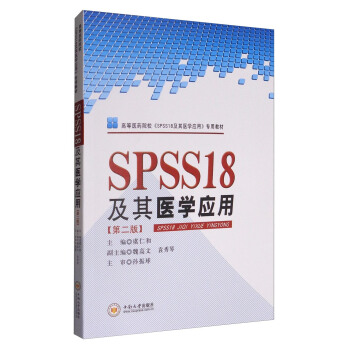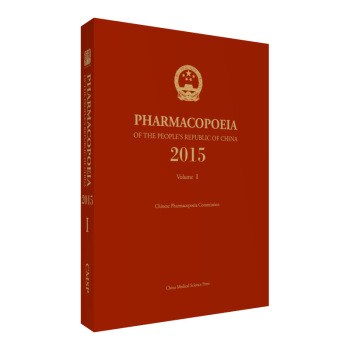![Adams-Victor神经病学(第10版 英文版) [Adams and Victor’s Principle of Neurology]](https://pic.tinynews.org/12042127/58a97079Nb1ff1caa.jpg)

具体描述
编辑推荐
著 作 《Adams -Victor神经病学》是几十年来神经病学领域的经典之作,被一般神经科医生誉为该领域蕞详细、蕞全面的著作。
内容系统 本书包括了神经病学的诊断方法,神经疾病的主要表现,老年神经疾病相关特点,常见神经疾病的类型,脊髓、外周神经、肌肉疾病,以及精神障碍六个方面,阐述了各种类型的神经疾病和每种类型中的主要疾病。每种疾病均详细介绍了神经功能障碍的症状、体征、解剖和生理基础,以及临床意义。
清晰易读 《Adams-Victor神经病学》一直保持精心编写、严谨陈述、清晰描述的写作初衷,更多地采用图、表陈述内容,从而提高可读性。
内容简介
《Adams-Victor神经病学(第10版 英文版)》包括了神经病学的诊断方法,临床表现,老年神经疾病相关特点,常见神经疾病的类型,脊髓、外周神经、肌肉疾病,以及精神障碍六个方面,同时为临床医生提供诊断思路及治疗策略。兼顾常见病和少见病。第10版增加了大量的彩色图片,扩大了重要亚专业的覆盖范围,增添了许多图表。本书被誉为神经病学的“圣经”,深受各国神经科医生推崇。
作者简介
Allan H.Ropper是哈佛医学院神经科主任,是全世界神经病学方面蕞好的专家。在多家期刊上发表过有影响力的文章,担任《Adams-Victor神经病学》第9版、第10版的主编。并著有多部著作。
内页插图
目录
PART 1: THE CLINICAL METHOD OF NEUROLOGY
PART 2: CARDINAL MANIFESTATIONS OF NEUROLOGIC DISEASE
SECTION 1 Disorders of Motility
SECTION 2 Pain and Other Disorders of Somatic Sensation,Headache,andBackache
SECTION 3 Disorders of the Special Senses
SECTION 4 Epilepsy and Disorders of Consciousness
SECTION 5 Derangements of Intellect,Behavior, and Language Caused by Diffuse
and Focal Cerebral Disease
SECTION 6 Disorders of Energy, Mood, and Autonomic and Endocrine Functions
PART 3: GROWTH AND DEVELOPMENT OF THE NERVOUS SYSTEM AND THE
NEUROLOGY OF AGING
PART 4: MAJOR CATEGORIES OF NEUROLOGIC DISEASE
PART 5: Diseases of Spinal Cord,Peripheral Nerve, And Muscle
PART 6: PSYCHIATRIC DISORDERS
前言/序言
As the rest of medicine changes, so does neurology.
Neurologic diagnosis and treatment has been so vastly altered by modern neuroimaging, molecular biology, and genetics that the original authors of this book, Raymond D Adams and Maurice Victor, would barely recognize the practices of today. Secular interest in neurologic diseases is also expanding because of the large num- ber of problems of the brain, spinal cord, nerves, and muscles that arise with aging and from the treatment and control of other, non-neurologic, diseases. Whereas cancer and heart disease had occupied foremost posi- tions in the minds of individuals within developed societies, Alzheimer, Parkinson, and related diseases are central to the modern conversation about the quality of life. Moreover, the desire to understand the workings of the brain and to gain insights into human behavior has become a preoccupation of the public. At the same time, the manner in which information, both accurate and otherwise, is transmitted about the nervous system and neurologic diseases has changed. Access to informa- tion about diseases, accepted treatments, and clinical symptoms and signs, ubiquitously clutters the internet. Physicians now less frequently seek a comprehensive understanding of a disease or class of diseases, “the whole story” if you will, but instead favor rapid access to single answers to a clinical problem.
For many reasons, particularly the last of these regarding the nature of medical information, writing a textbook on neurology has become a complex enterprise. We have even asked ourselves if there is a role for a text- book in the modern era, especially one written by only three authors. Yet, in identifying the characteristics of the capable clinician, one who is equipped to help patients and play a role in society to the fullest extent possible, we continuously return to the need for careful clinical analysis that is combined with a deep knowledge of disease. these are still the basis for high-quality practice and teaching. even if the current goals of efficiency and economy in medicine are to be met, neurology is so com- plex that the confident implementation of a plan of diag- nostic or therapeutic action quickly finds itself beyond algorithms, flow charts, and guidelines. the goal of our textbook therefore is to provide neurologic knowledge in an assembled way that transcends facts and information and to present this knowledge in a context that cannot be attained by disembodied details. While the biological bases of neurologic diseases are being discovered rapidly, the major contribution of the clinical neurologist remains, as it is for the whole of medicine: a synthesis of knowing how to listen to the patient, where to find the salient neurologic signs, and what to acquire from labora- tory tests and imaging.
There is always a risk of such a book being simply archival. But the dynamic nature of modern neurologyrequires more than ever a type of integration amongknowledge of clinical neurosciences, traditional neurol- ogy, and the expanding scientific literature on disease mechanisms. only a text that has been thoughtfully constructed for the educated neurologist can fulfill this need and we hope that we have done so in this edition. Furthermore, in appropriate conformity to the methods by which physicians obtain information, McGraw-Hill has made an investment in their Access Medicine web- site that will highlight our book as well as several other neurology texts. combined with these books will be sophisticated search functions, teaching curricula for stu- dents and residents, and, hopefully in the future, a form of interaction with us, the authors. Another inception has been the addition of color figures and photographs to this edition in order to make the visual material more acces- sible and appropriate for the web version.
To these ends, we offer the current 10th edition of Principles of Neurology to meet the needs of the seasoned as well as the aspiring neurologist, neurosurgeon, inter- nist, psychiatrist, pediatrician, emergency physician, physiatrist, and all clinicians who have need of a com- prehensive discussion on neurologic problems. We begin with an explanation of the functioning of the nervous system as it pertains to neurologic disease in the first part of the book, followed by detailed descriptions of the clinical aspects of neurology in its great diversity. in all matters, we have put the patient and relief of suffer- ing from neurologic disease in a central place. the book is meant to be practical without being prescriptive and readable without being too exhaustive. When there is a digression, it has been purposely structured to complete a picture of a particular disease. We have also retained historical aspects of many diseases that are central to the understanding of the specialty and its place in medicine.
By taking an inclusive and yet sensibly chosen clini- cal approach, we do not eschew or criticize the modern movement to homogenize medicine in order to attain uniformity of practice. We ourselves have witnessed over 35 years the unappealing aspects of idiosyncratic practices, which were based on limited basic informa- tion and on a superficial understanding of neurology. Nonetheless, the complexity of neurologic diseases, espe- cially now, puts the practitioner in a position of choosing among many options for diagnosis and treatment that are equivalent, or for which the results are uncertain. clinical trials abound in neurology and set a direction for clinical practice in large populations, but are difficult to apply to individual patients. the need for a coherent method of clinical work is one reason we have retained author- ship rather than editorial management that character- izes many textbooks in other areas of medicine. Limited authorship permits a uniform style of writing and level of exposition across subject matter and chapter headings.
It also allows us to judiciously include our own experiences and opinions when we feel there is something more to say than is evident in published articles. our comments should be taken as advisory and we have no doubt that our colleagues in practice will develop their own views based on the body of information provided in the book and what is available from many outside sources. to the extent that some of the views we express in the book may be perceived as having a “Boston-centric” outlook, we appeal to the reader’s forbearance. We have neither a proprietary formula for success in neurology nor the answers to many of the big clinical questions. if there is a stylistic aspect that comes through in the book, we hope it is still that neurology must be taken one patient at a time.
We gratefully acknowledge on the following pages several experts in particular fields of neurology whose help was invaluable in revising this edition. We sought their guidance because of the high regard we have fortheir clinical skills and experience. if there are concernsregarding specific comments in the book, they are our responsibility.
With this edition, we introduce our colleague JoshuaP. Klein, MD, PhD, the chief of the Division of Hospital Neurology in the Department of Neurology at Brigham and Women’s Hospital. Dr. Klein is dually trained in neurology and neuroradiology. He brings a wealth of perspective on imaging and has been a powerful partner in moving the book toward a more modern idiom that recognizes the centrality of neuroimaging in practice. it is a privilege to have him join us to bring the book through the beginning of the current century.
Allan H. Ropper, MD
Martin A. Samuels, MD Joshua P. Klein, MD, PhD
用户评价
作为一个刚踏入神经病学领域的医学生,我一直对“Adams-Victor神经病学”这本书心怀敬畏。当我终于有机会翻开这本第10版英文原著时,我既兴奋又感到一丝压力。这本书的厚重感就足以说明其内容的深度和广度,它仿佛是一座知识的宝库,等待着我去探索。我最期待的是它如何将那些看似复杂抽象的神经系统疾病,以一种清晰、有条理的方式呈现出来。我希望它不仅仅是罗列疾病的名称和症状,而是能深入浅出地讲解疾病的发病机制,以及它们是如何影响大脑和神经系统的正常功能的。毕竟,理解“为什么”比仅仅记住“是什么”要重要得多,尤其是在临床实践中。我还会特别关注书中对于诊断方法的介绍,是会涵盖最新的影像学技术,还是侧重于传统的体格检查和病史询问?我猜想,一本如此经典的教材,必然会兼顾理论与实践,为我们这些新手提供扎实的理论基础,同时又不失对临床实用的指导意义。我期待着它能像一位经验丰富的导师,循循善诱,引导我一步步理解神经病学的奥秘。
评分对于长期在临床一线工作的神经内科医生来说,拥有最新版本的“Adams-Victor神经病学”无疑是保持专业领先性的关键。我特别关注这本书在疾病分类、诊断标准以及治疗方案上的更新。神经病学发展迅速,新的疾病不断被发现,旧的疾病也有了新的认识,治疗方法也在不断进步。我希望第10版能够及时反映这些前沿进展,例如在神经退行性疾病如阿尔茨海默病和帕金森病方面,是否有新的生物标志物或靶向治疗的突破性进展?在脑血管疾病方面,对于急性缺血性卒中的溶栓和介入治疗,目前的最佳实践是什么?此外,罕见病和疑难杂症的处理也是我关注的重点,经典的教材往往会对这些内容进行深入的梳理,为我们提供诊断和治疗的思路。当然,作为一本英文原版,我期待它能保留原有的严谨和权威性,用精准的医学语言阐述复杂的概念,避免翻译过程中可能出现的理解偏差。一本好的参考书,应该能够快速帮助我检索信息,并提供可靠的循证医学证据支持。
评分作为一名神经科学研究人员,我对于“Adams-Victor神经病学”第10版英文版的关注点会更加偏向于其理论基础和研究前沿的结合。我希望书中能够深入探讨神经系统疾病的分子机制和细胞信号通路,以及最新的基因编辑技术、免疫疗法等在神经疾病治疗中的应用前景。例如,在神经肿瘤领域,我非常想了解近些年来的基因组学研究是如何改变我们对脑瘤分类和治疗的认识的。在神经免疫学方面,诸如多发性硬化症、重症肌无力等自身免疫性疾病,其发病机制的研究进展以及新型免疫调节药物的临床应用情况,我希望都能得到详尽的阐述。此外,对于一些尚未完全阐明病因的神经系统疾病,例如某些类型的癫痫或运动障碍,我期待书中能提供最新的研究方向和尚未解决的科学问题,激发我的研究灵感。一本优秀的教科书,不应仅仅停留在临床描述层面,更应为基础研究提供有力的理论支撑和发展方向。
评分我是一个对神经科学充满好奇的普通读者,虽然我不是医学专业人士,但我一直对大脑和神经系统如何运作感到着迷。当我看到“Adams-Victor神经病学”第10版英文版时,我被它的标题所吸引。我猜想这本书会用一种相对易懂的方式来解释那些关于大脑的复杂概念。我希望它能带我了解我们大脑的不同区域各自负责什么功能,以及当这些功能出现问题时,会发生什么。比如,当我听到有人说某人“失忆了”,我很好奇大脑的哪个部分出了问题。或者,当我看到关于帕金森氏病的新闻,我想知道是什么让患者的手不自主地颤抖。这本书是否会介绍一些有趣的神经科学小故事,或者用生动的比喻来解释抽象的原理?我希望它能让我对神经系统疾病有一个初步的认识,了解它们是如何影响人们的生活,以及现代医学是如何努力去帮助这些患者的。我期待它能点燃我对神经科学的更多兴趣。
评分作为一名寻求进阶学习的神经病学进修医生,我非常看重“Adams-Victor神经病学”第10版英文版在系统性、完整性和深度方面的表现。我希望它能成为我巩固和深化知识的有力工具,尤其是在那些我感到相对薄弱的领域。例如,对于一些复杂的脑神经疾病,例如颅神经麻痹的鉴别诊断,我希望能看到更加细致的鉴别要点和临床路径。在脊髓疾病方面,我期待它能详细阐述各种脊髓病变(如脊髓炎、脊髓压迫、脊髓血管病)的病理生理机制、影像学特点和治疗策略。同时,我也希望书中能够涵盖一些相对罕见的神经系统疾病,这些疾病虽然不常见,但一旦遇到,往往棘手异常。此外,一本高质量的参考书,其索引和参考文献的质量也非常重要,我希望能够方便地查阅到我感兴趣的主题,并能追溯到更原始的研究文献。我希望这本书能帮助我从“知道”走向“理解”,再到“应用”。
相关图书
本站所有内容均为互联网搜索引擎提供的公开搜索信息,本站不存储任何数据与内容,任何内容与数据均与本站无关,如有需要请联系相关搜索引擎包括但不限于百度,google,bing,sogou 等
© 2025 book.idnshop.cc All Rights Reserved. 静思书屋 版权所有




![体外受精胚胎移植技术实施指南 [Guidelines For Implementation of in Vitro Fertilization and Embryo Transfer Technology] pdf epub mobi 电子书 下载](https://pic.tinynews.org/12056459/58eaf7c8N3a2c545c.jpg)

![实用浅表器官和软组织超声诊断学(第2版) [Practical Ultrasonography of Superficial and Soft Tissue] pdf epub mobi 电子书 下载](https://pic.tinynews.org/12063989/58f6c557Nbf114029.jpg)




![肩关节镜手术技巧(2015北医基金) [Surgical Techniques in Shoulder Arthroscopy] pdf epub mobi 电子书 下载](https://pic.tinynews.org/12072818/584a82fbNf4d9269e.jpg)








